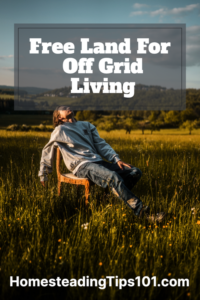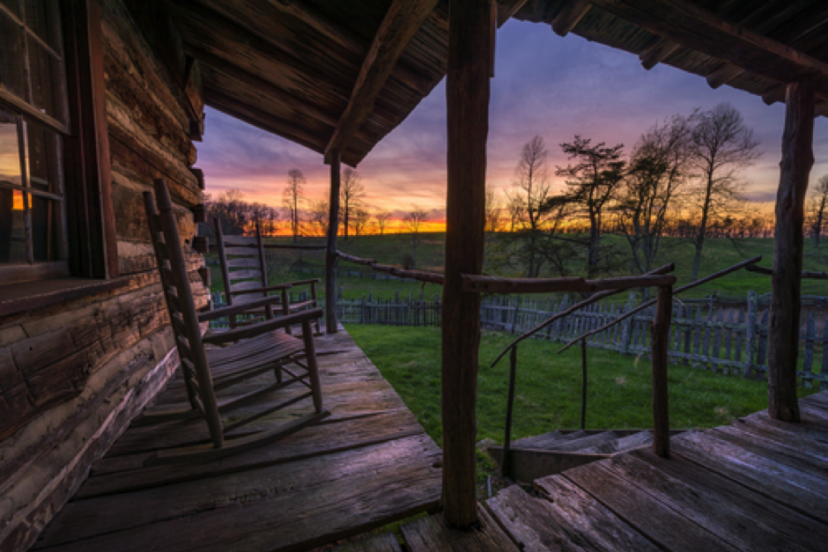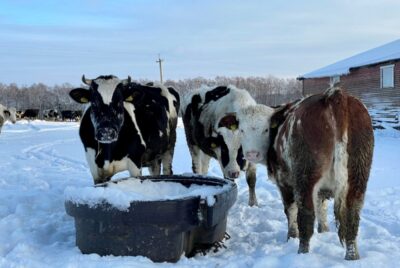Unlocking the Potential of Free Land for Off Grid Living: A Comprehensive Guide
"We may earn a commission from purchases made using our links. Please see disclaimer."
As a connoisseur and mentor in off-grid living, I am captivated by the notion of acquiring land for free. Imagine claiming a portion of this vast earth, at zero expense, as your own personal sanctuary.
The Magnetic Pull of Free Land

The proposition of free land may strike one as implausible, as real estate is frequently touted as one of the most lucrative investments. However, if your aspirations include establishing a self-sufficient homestead, exploring free land options could be the key to realizing your dreams.
A Nod to History: The Homestead Act of 1862
The historical Homestead Act of 1862, albeit no longer active, serves as the bedrock of the free land philosophy. This groundbreaking legislation offered 160 acres of public land to virtually any individual committed to cultivating it over five years. The only major prerequisite was that applicants had to be at least 21 years of age.
The Homestead Act opened up opportunities for pioneer settlers to claim land and build homesteads. It granted up to 160 acres of free government land to homesteaders willing to farm and live on it. This act forms the foundation for subsequent free land programs in America to encourage expansion and agriculture.
Modern homesteading on free land traces its roots back to this seminal legislation which sought to promote Western migration and development. The Homestead Act’s legacy continues today through free land programs that provide opportunities for off-grid, sustainable living.
Evolution of the Free Land Concept
 In contemporary times, the free land ethos has taken on a new form. The pioneers of yesteryears only had to contend with nominal filing fees, while today’s settlers face additional financial commitments. Modern incentives may include property tax exemptions for a few years or support for constructing a home. Certain localities may grant tax incentives if the value of the land appreciates. However, it’s imperative to be well-versed in local regulations, as building a residence within a stipulated time is often mandatory to avail these incentives.
In contemporary times, the free land ethos has taken on a new form. The pioneers of yesteryears only had to contend with nominal filing fees, while today’s settlers face additional financial commitments. Modern incentives may include property tax exemptions for a few years or support for constructing a home. Certain localities may grant tax incentives if the value of the land appreciates. However, it’s imperative to be well-versed in local regulations, as building a residence within a stipulated time is often mandatory to avail these incentives.
The concept of free land has evolved to include more requirements for modern homesteaders, but many attractive incentives like tax breaks and home construction assistance can offset the costs and efforts. Free land programs today still embody the spirit of opening up land for homesteading but have adapted to contemporary needs. Settlers may now be required to build within a timeframe or meet other conditions for continued tax relief. Local regulations around zoning, permits, utilities, etc. may also apply to free land plots, so due diligence is essential.
Unearthing Free Land Gems Across the United States
Despite the Homestead Act of 1862 being obsolete, numerous cities within the United States are offering enticing packages to invite settlers to their land. These schemes can substantially alleviate expenses linked with relocating, thus creating an attractive proposition for those desiring a tranquil rural lifestyle.
Many little-known towns and rural communities across the country offer amazing free land opportunities for modern-day homesteading. From the Midwest to the Mountain States, free plots of land can still be found that grant homesteaders the chance to build an off-grid lifestyle. Extensive research can unearth small rural governments providing free land incentives to boost their populations and local economies. These modern homesteading havens allow sustainable living while revitalizing dwindling communities.
Diving Into Free Land in Kansas
Our journey begins in Kansas, focusing on three towns—Marquette, Lincoln, and Mankato.
Kansas has long been a hotspot for homesteaders looking to settle on free government land grants and plots. As the heart of farming country, Kansas epitomized the frontier expansion spurred by Lincoln’s Homestead Act. That makes it a fitting modern-day bastion for free lands enticing homesteaders seeking fertile ground for sustainable off-grid living. Towns like Marquette, Lincoln, and Mankato uphold Kansas’ homesteading heritage through their free land programs.
Free Land For Off Grid Living Opportunities by State
Kansas:
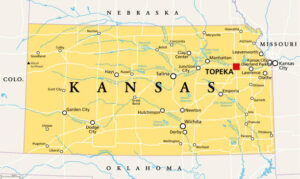 Marquette, Lincoln, and Mankato are presently providing government land for homesteading in Kansas. Each town sets its own eligibility criteria and conditions, generally involving the construction of a home within a specified period. For instance, in Mankato, you must secure pre-approval from a lender and finalize an agreement with a construction contractor prior to applying.
Marquette, Lincoln, and Mankato are presently providing government land for homesteading in Kansas. Each town sets its own eligibility criteria and conditions, generally involving the construction of a home within a specified period. For instance, in Mankato, you must secure pre-approval from a lender and finalize an agreement with a construction contractor prior to applying.
Many small Kansas towns continue the historical homesteading tradition by offering free land to this day. From vast prairie plots to village in-fill programs, Kansas sustains its pioneering spirit by granting free government land for modern off-grid homesteads. Kansas municipalities provide their own unique incentives like tax abatements while sharing core requirements such as home-building timelines that preserve the integrity of these land programs.
Nebraska:
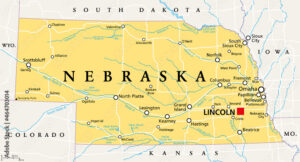 In Elwood, Nebraska, a homeownership program offers free plots to single families eager to build and inhabit custom homes. Each lot spans approximately 100 by 150 feet. Construction must commence within one-year post-approval, and the home must be occupied within two years. A refundable deposit of $500 is also necessary.
In Elwood, Nebraska, a homeownership program offers free plots to single families eager to build and inhabit custom homes. Each lot spans approximately 100 by 150 feet. Construction must commence within one-year post-approval, and the home must be occupied within two years. A refundable deposit of $500 is also necessary.
Like its neighbor Kansas, free government land for modern homesteading can also be found in rural Nebraska. Nebraska’s Midwestern locale and agricultural industry make it amenable to off-grid living, much like the early frontier. Towns such as Elwood entice today’s homesteaders through free village lots for those committed to building within reasonable timeframes.
Iowa:
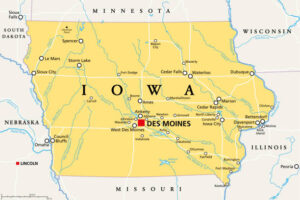 In Manilla, Iowa, up to 16 plots are available free of charge. These come with a five-year 100% tax abatement, paved roads, spacious dimensions, on-site utilities with zero hookup fees, and investment-protecting agreements. The only requirement is ensuring compliance with building codes.
In Manilla, Iowa, up to 16 plots are available free of charge. These come with a five-year 100% tax abatement, paved roads, spacious dimensions, on-site utilities with zero hookup fees, and investment-protecting agreements. The only requirement is ensuring compliance with building codes.
Iowa is another Midwestern state with attractive modern homesteading opportunities on offer such as free land, tax breaks, and infrastructure. Much like its neighbors, Iowa sustains the Midwest’s agricultural homesteading heritage by granting free lands to cultivate sustainable living. Towns such as Manilla offer stunning packages with five-year tax waivers, spacious lots with paved access and utilities, provided zoning laws are followed.
Crucial Considerations for Free Land Applicants
 When applying for free land, anticipate encountering varied prerequisites. Common requirements include constructing a home within a given timeframe (usually one to five years) and sometimes adhering to a minimum house size. Additionally, you might need to demonstrate financial capability for construction and commit to residing in the home for a specific duration.
When applying for free land, anticipate encountering varied prerequisites. Common requirements include constructing a home within a given timeframe (usually one to five years) and sometimes adhering to a minimum house size. Additionally, you might need to demonstrate financial capability for construction and commit to residing in the home for a specific duration.
Homesteaders should carefully examine all requirements before applying for free government land grants. Free land is not guaranteed without meeting certain conditions laid out by municipal authorities such as constructing homes rapidly or financing proof. Time limits, residence commitments, and compliance paperwork should all be reviewed thoroughly prior to embarking on the application process.
In addition, it is vital to ponder the location. Most free land programs are in rural or isolated areas aimed at population growth, so be prepared for a dramatic shift in lifestyle if you’re accustomed to urban living.
The remote locations of most free homesteading land require serious lifestyle adjustments. While idyllic in theory, the reality of rural living on isolated lands represents a major transition for city dwellers unaccustomed to independence from urban infrastructure and amenities.
Navigating the Application Process
 The application process varies but generally involves filling out a form and submitting documentation, such as income proof, building plans, and a commitment to reside in the area for a stipulated time. Some programs may ask for a refundable deposit or initial investment which could be returned or utilized for home construction. Engage in thorough research and reach out to the local governing bodies to understand the specifics of the application process.
The application process varies but generally involves filling out a form and submitting documentation, such as income proof, building plans, and a commitment to reside in the area for a stipulated time. Some programs may ask for a refundable deposit or initial investment which could be returned or utilized for home construction. Engage in thorough research and reach out to the local governing bodies to understand the specifics of the application process.
Homesteaders should do comprehensive research on requirements and ask local government agencies for application guidance. Free land applicants must be prepared to furnish detailed paperwork proving their financial standing, construction plans, and residency intentions. Complete documentation research coupled with direct coordination with municipal authorities streamlines the application procedure.
Building Your Off-Grid Haven
Homesteaders should establish thoughtful plans for their self-sufficient off-grid properties. Whether granted plots in rural Kansas or village in-fill lots in Nebraska, recipients of free lands must strategize infrastructure for fully autonomous off-grid living. Once you have secured the land, the next stage involves creating your off-grid homestead. Here are steps to consider:
1. Planning and Compliance: Ensure your building plans adhere to local codes and zoning laws. Factor in considerations for sustainability, as off grid living typically involves reliance on renewable energy sources and self-sufficiency in water and waste management.
2. Resource Management: Optimize the use of natural resources. Install solar panels for electricity, set up a rainwater harvesting system, and consider composting toilets or septic systems for waste management.
3. Agriculture and Livestock: Plan for a garden and possibly livestock to achieve a degree of self-sustainability in food production. This is not only economical but also ensures a healthier lifestyle with fresh produce.
4. Community Integration: Engage with the local community. In off grid living, especially in rural areas, communities often rely on each other for support, sharing resources, and social integration.
5. Emergency Preparedness: Be prepared for emergencies. Ensure that you have an emergency plan in place, including provisions for healthcare, since rural areas may not have immediate access to medical facilities.
6. Ongoing Maintenance: Off grid living requires ongoing maintenance of systems like solar panels, water harvesting, and waste management. It’s essential to be hands-on and have a basic understanding of how these systems work.
7. Financial Management: Manage your finances wisely. Off grid living can be economical in the long run, but initial setup and ongoing maintenance costs can be substantial. Make sure you have a financial plan in place.
Homesteaders must plan carefully for the unique infrastructure and maintenance requirements of off-grid properties. Recipients of free government lands must engineer solutions for water, energy, and waste along with food production while integrating into rural communities.
Potential Challenges and How to Overcome Them
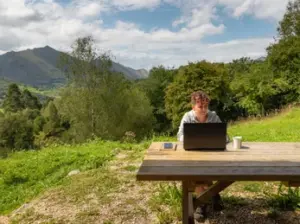
Despite the benefits, prospective homesteaders should realistically assess the difficulties of remote off-grid living. Idyllic country homesteading belies underlying hardships from isolation to austerity requiring mental toughness and vital survival skills. While the allure of free land is compelling, there are challenges associated with off grid living that you must be prepared for:
1. Remoteness and Accessibility: Living in a remote area can be isolating. Ensure you are mentally prepared for this lifestyle shift. Keep communication lines open and consider creating networks with neighbors for social interaction and support.
2. Limited Services: You might have limited access to healthcare, educational institutions, and shopping centers. Plan ahead and consider alternatives such as homeschooling, telemedicine, and buying supplies in bulk.
3. Climate and Environment: The climate in rural areas can be harsher compared to urban settings. Make sure your home is built to withstand the local weather conditions and prepare for seasonal challenges.
4. Legal and Regulatory Constraints: Sometimes, local regulations may not be favorable towards off-grid living. Ensure you are familiar with these laws, and be prepared to advocate for your lifestyle choice if necessary.
Homesteaders require resourcefulness and strong social connections to overcome common rural living difficulties. Self-sufficiency, mutual community assistance, contingency planning, and awareness of legal environments arm homesteaders to handle remote living obstacles.
Conclusion
Embracing the opportunity of free land for off grid living requires meticulous planning, adaptability, and a commitment to a self-sufficient lifestyle. While the journey can be arduous, the rewards of living in harmony with nature, free from the constraints of urban life, can be immensely fulfilling. Be informed, be prepared, and embark on this adventure with an open heart and mind.
Despite hurdles, free land homesteading allows the chance to create an incredibly fulfilling off-grid lifestyle. With due diligence and grit, modern-day pioneers can flourish through the generosity of municipal land programs to realize historical dreams of idyllic pastoral living.
FAQs
Here are some frequently asked questions (FAQs) related to free land for off grid living:
1. Is there such a thing as free land for homesteading?
Yes, there are places in the United States that offer free land for homesteading. This practice stems from the development of the Homestead Act of 1862, which aimed to encourage the development of the American West. Today, free land programs are designed to generate traffic to small towns and communities across the U.S.
2. What is the Homestead Act of 1862?
The Homestead Act of 1862, which took effect in 1863, provided 160 acres of public land to almost anyone, with the only requirement being a minimal filing fee and a commitment to live on the land with the sole purpose of improving it over five years. This policy aimed to encourage the development of the American West.
3. What are the financial responsibilities of homesteaders today?
While you are unlikely to find entirely free land today, many local governments are willing to forego property taxes for several years or assist with the down payment of building a house on a parcel of open land. Some areas may also provide tax rebates if the property value of your land increases. The majority of these programs require you to build a house on the property to be eligible for any financial benefits.
4. Where can I find free land for homesteading in the United States?
There are several cities in the United States that have comprehensive packages to encourage families and individuals to move onto their land to boost populations. However, it’s important to note that you are unlikely to get 160 acres of land, which was the amount provided under the Homestead Act of 1862.
5. Can you provide examples of places offering free land?
Yes, several towns in Kansas, Nebraska, and Iowa offer free land for homesteading. In Kansas, Marquette, Lincoln, and Mankato offer free land with certain restrictions, such as the need to build a house within a certain timeframe and meet minimum square footage requirements. Elwood in Nebraska offers lots to single families interested in building and residing in a custom home, with the requirement to begin construction within a year of application approval. In Iowa, Manilla has up to 16 individual lots available at no cost, with minimal requirements other than ensuring your home is up to code.
6. Is the land truly free?
While the land itself may be provided free of charge, there are often requirements that may involve financial investment. These can include building a home within a certain timeframe, meeting specific home size requirements, or paying a deposit. Therefore, while the land is free, establishing a homestead on it will involve costs.
